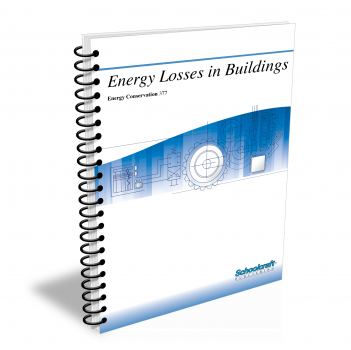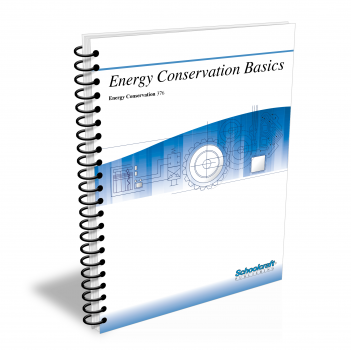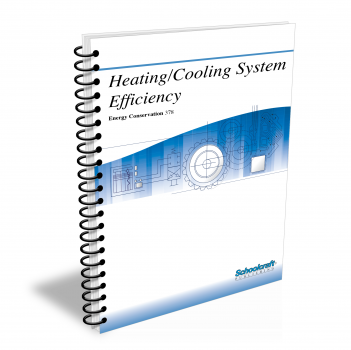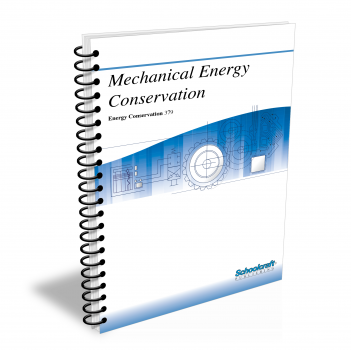Energy Losses in Buildings

Course Number: 377
The Energy Losses in Buildings textbook covers physical laws of heat transfer and how they apply to building heat losses. It discusses the effects of sun, wind, and shade on energy consumption in buildings, and examines characteristics of different types of walls, roofs, windows, and flooring. The textbook demonstrates how different forms of insulation can improve thermal resistance, and gives sample applications of energy conservation measures, illustrating how to determine cost and payback period.
Does your curriculum require additional topics not included in this textbook? Build a customized version of the Energy Losses in Buildings textbook below.
Recommended Contact Hours – 10
Preview a Chapter
Available Supporting Material
- Table of Contents
- Exam Copies
- Suggested Titles
Table of Contents
Chapter 1: Heat Flow Principles
Topics: Detecting heat loss; Insulation; Environmental considerations; Windbreaks; Foundation plantings; Building orientation
Learning Objectives:
- Distinguish between heat transfer by conduction, convection, and radiation.
- Explain the importance of infiltration in a building's heat loss/gain.
- Define thermal conductance, overall coefficient of heat transmission, and thermal resistance and how they relate to each other.
- Explain the concept of the building envelope
- Tell how environmental factors can affect the loss of gain of heat in a building.
Chapter 2: Heat Loss/Gain Through Roofs
Topics: Roof construction and insulation; Vapor barriers; Ventilation; Types of insulation, applications; Checking heat leaks; Infrared scanner
Learning Objectives:
- Demonstrate how to arrive at the R value of a roof section.
- List the principal types of roof and ceiling insulation and the applications for which each is best suited.
- Name the two most effective precautions to take against moisture damage and give examples of their proper installation.
- Explain how and under what circumstances heat leaks can be detected in roof structures.
- the facts needed for payback calculations and tell how to use them to determine payback periods.
Chapter 3: Minimizing Heat Flow Through Walls
Topics: Totaling R values; Insulating materials; Vapor barriers; Cold-side venting; Convective looping; Insulating foundations; Metal walls; U values
Learning Objectives:
- Evaluate the merits of the common forms of insulation as applied to wall construction.
- Identify at least two types of vapor barrier and tell when each would be used.
- Explain convective looping and how to prevent it.
- Tell why metal buildings have special insulation needs and describe the techniques developed for them.
- Use payback calculations to determine which of two alternatives conservation measures is the more profitable.
Chapter 4: Heat Loss/Gain Through Windows and Doors
Topics: Infiltration; Caulking; Weather-stripping; Air locks; Sealed windows; Storm windows; Draperies; Solar heat gain; Shading
Learning Objectives:
- Identify two forms of infiltration.
- Explain the valves of an air lock and describe a typical installation.
- Name at least three means of reducing conductive heat loss through windows.
- Tell why the angle of the sun is important in efforts to increase or minimize solar heat gain.
- State the reason for the lengthy payback period on most window retrofits.
Chapter 5: Controlling Losses Through Floors
Topics: Above-, below-, and on-grade floors; Vapor barriers; Ground cover; Crawl spaces; Surface drainage; Floor coverings; Pipes; Duct work; Retrofits
Learning Objectives:
- Describe the principal methods of insulating existing above-ground floors.
- Tell how to test for capillary rise ion a crawl space.
- Point out the value of a ground-cover vapor barrier.
- List two ways to insulate on-grade or below-grade floors
- Explain the special problems involved in calculating heat losses and payback periods for on-grade and below-grade floors.
Request Exam Copies
Exam Copies
Ready to see a copy of our textbooks? After selecting which textbooks you’d like to review for your course, you can submit your request by either logging in or creating an account so we know where to ship your exam copies. A representative from Schoolcraft will contact you to confirm and finish processing your request.
Exam copies are always free and yours to keep.
Selected Exam Copies
none selected
* Maximum of five copies can be ordered



